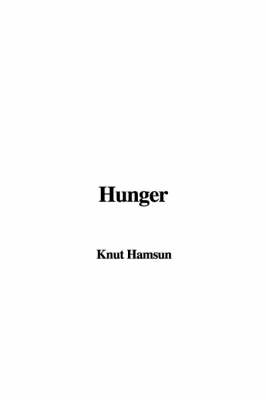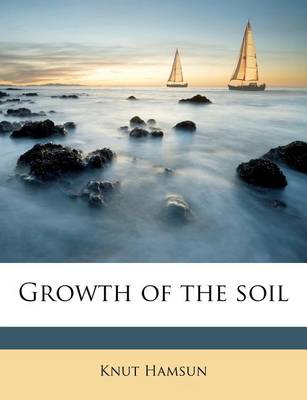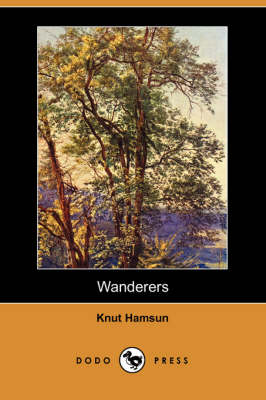Picador Books
5 total works
A modernist masterpiece: the Nobel Prize winner’s first and most important novel
First published in Norway in 1890, Hunger probes the depths of consciousness with frightening and gripping power. Contemptuous of novels of his time and what he saw as their stereotypical plots and empty characters, Knut Hamsun embarked on “an attempt to describe the strange, peculiar life of the mind, the mysteries of the nerves in a starving body.” Like the works of Dostoyevsky, it marks an extraordinary break with Western literary and humanistic traditions.
For more than seventy years, Penguin has been the leading publisher of classic literature in the English-speaking world. With more than 1,800 titles, Penguin Classics represents a global bookshelf of the best works throughout history and across genres and disciplines. Readers trust the series to provide authoritative texts enhanced by introductions and notes by distinguished scholars and contemporary authors, as well as up-to-date translations by award-winning translators.
Source: https://www.penguinrandomhouse.com/books/330496/hunger-by-knut-hamsun/9781101144022
First published in Norway in 1890, Hunger probes the depths of consciousness with frightening and gripping power. Contemptuous of novels of his time and what he saw as their stereotypical plots and empty characters, Knut Hamsun embarked on “an attempt to describe the strange, peculiar life of the mind, the mysteries of the nerves in a starving body.” Like the works of Dostoyevsky, it marks an extraordinary break with Western literary and humanistic traditions.
For more than seventy years, Penguin has been the leading publisher of classic literature in the English-speaking world. With more than 1,800 titles, Penguin Classics represents a global bookshelf of the best works throughout history and across genres and disciplines. Readers trust the series to provide authoritative texts enhanced by introductions and notes by distinguished scholars and contemporary authors, as well as up-to-date translations by award-winning translators.
Source: https://www.penguinrandomhouse.com/books/330496/hunger-by-knut-hamsun/9781101144022
The story of an elemental existence in rural Norway.
About the Author Knut Hamsun (August 4, 1859 - February 19, 1952) was a Norwegian author, who was awarded the Nobel Prize in Literature in 1920. Hamsun's work spans more than 70 years and shows variation with regard to the subject, perspective and environment. He published more than 20 novels, a collection of poetry, some short stories and plays, a travelogue, and some essays. -wikipedia
In their gossiping at the pump the women express the poetry, the tawdriness and, above all, the sheer vitality of life in Hamsun's small coastal town. A birth (where did those brown eyes come from?); a marriage (shotgun?); a death in strange circumstances (the victim flattened by a barrel of whale oil); the up-and-down career of the town's leading citizen and philanderer; the elderly spinster's pregnancy; the sinking of the steamship that is the town's pride and joy. Above all, talk centres on the doings of Oliver Andersen and the large family that he and his wife contrive to create despite growing suspicions that his mysterious accident at sea has deprived him of more than a leg... The Women at the Pump overflows with a prodigality of invention and sardonic humour typical of Hamsun's work at its best. First published in 1920, the year Hamsun won the Nobel Prize for Literature, it has a universal quality that transcends time and place. Hamsun's women live on the Norwegian coast but their soulmates flourish in every small community around the world.
As the modern industrialised world begins to encroach on a small, isolated coastal town in northern Norway the effect is devastating. For young Edevart, uprooted from his simple origins, it brings progressive alienation from the old traditions; for August, the lying, charming scoundrel, it means opportunities that will threaten the stability of an unspoiled community.
With comic irony and a haunting power, Hamsun charts the slow disintegration of the old way of life in a magnificent novel that provides brilliant insights into human nature: the visiting skipper who is lured to his death by Ane Marie because, hurtfully, he did not makes advances to her; the old watch seller who is as ready to cheat himself as he is to swindle others; the poignant, painful love affair between Edevart and the barefoot Lovise Magrete.
Written seven years after Hamsun received the Nobel Prize for literature, Wayfarers is a masterpiece by one of the great novelists of the twentieth century.
With comic irony and a haunting power, Hamsun charts the slow disintegration of the old way of life in a magnificent novel that provides brilliant insights into human nature: the visiting skipper who is lured to his death by Ane Marie because, hurtfully, he did not makes advances to her; the old watch seller who is as ready to cheat himself as he is to swindle others; the poignant, painful love affair between Edevart and the barefoot Lovise Magrete.
Written seven years after Hamsun received the Nobel Prize for literature, Wayfarers is a masterpiece by one of the great novelists of the twentieth century.




